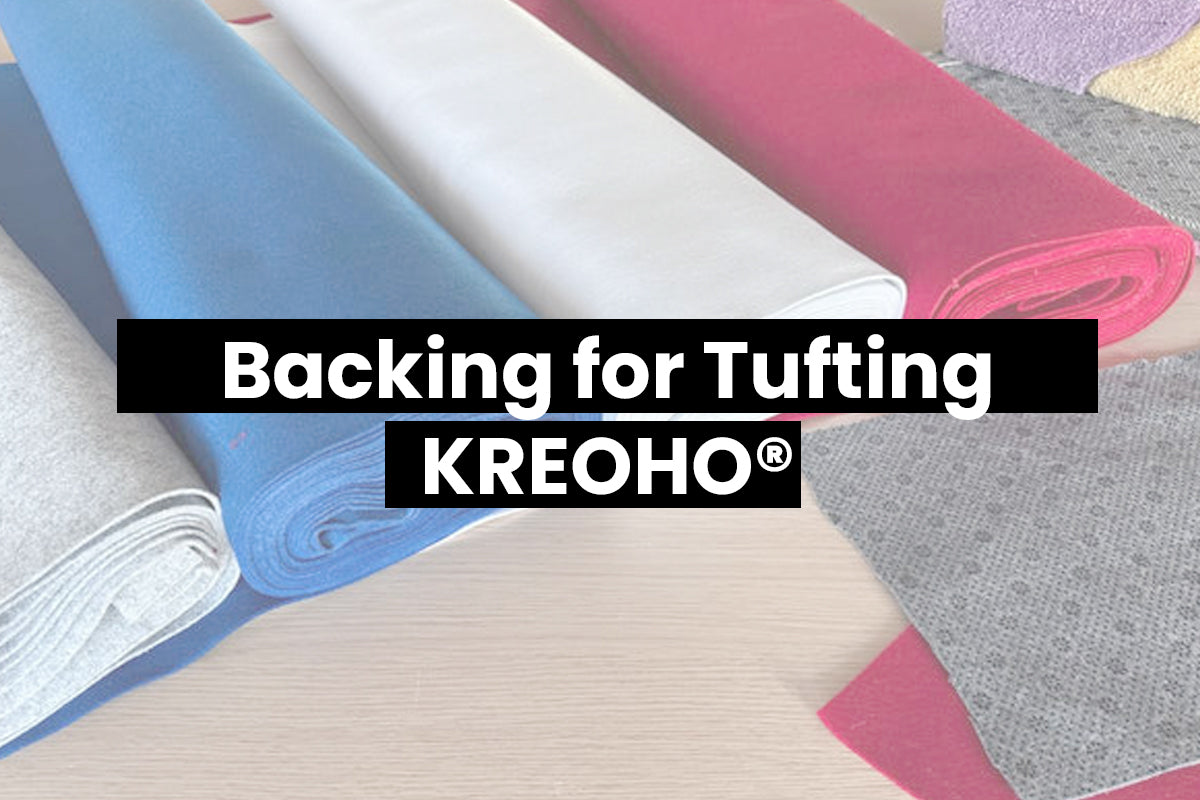When creating a tufting piece, it’s not enough to focus only on the design and yarn quality — the backing also plays a crucial role. In particular, the secondary backing for tufting is what transforms a simple tufted fabric into a strong, stable, and long-lasting finished product.
Table of Contents
- 1. Why Backing Matters
- 2. Types of Backing: Felt and Anti-Slip
- 3. How to Choose the Right Secondary Backing
- 4. Glue and Edge Tape: Essential Accessories
- 5. Secondary Backing FAQ
1. Why Backing Matters
The backing isn’t just a support — it’s the structural base that ensures your tufted piece stays intact over time. After finishing the tufting stage, applying a secondary backing keeps the yarns securely fixed and prevents the work from deforming or sliding.
Without backing, yarns may loosen with use, compromising both the look and the durability. That’s why, together with the right accessories and proper yarns, the backing is an essential step for every tufter.

2. Types of Backing: Felt and Anti-Slip
To simplify the choice, let’s focus on the two most practical options for tufting projects: felt and anti-slip fabric.
Felt Secondary Backing
Felt is ideal for wall hangings and decorative pieces. It’s light, soft to the touch, and gives a clean finish to the back. It reduces total weight, making hanging easier with hooks or support systems. It’s the preferred option when the piece won’t be stepped on and a tidy, professional finish is desired.

Anti-Slip Fabric
The anti-slip backing is designed for floor rugs. Its rubberized or dotted texture increases grip and minimizes slipping. Beyond safety, it adds strength and helps maintain shape and stability over time — especially in high-traffic areas like entrances, living rooms, or shops.

We’ve already covered in other posts how accessories influence the final result and how long pile rugs require a sturdier base — and the same logic applies when choosing your backing.
3. How to Choose the Right Secondary Backing
Every tufting project has different needs. A rug meant for the floor requires a non-slip backing, while a wall piece can use light felt. The rule is simple: always consider the final purpose of your work and the level of wear it will face.
- Floor rugs: anti-slip fabric for safety and stability on smooth surfaces.
- Wall art and tapestries: felt or lightweight backing to reduce weight and keep a clean backside.
- Decorative items: for pieces that are often moved, felt gives light protection and shape stability.

4. Glue and Edge Tape: Essential Accessories
A professional finish doesn’t depend only on the backing — glue and edge tape also make a big difference. Tufting glue secures the loops to the primary backing and prepares the surface for the secondary one. The edge tape protects the borders from wear and gives a neat finish, especially for rugs that are frequently handled or stepped on.

5. Secondary Backing FAQ
Do I always need a secondary backing?
For floor rugs, yes — the secondary backing is highly recommended (preferably anti-slip). For wall hangings, felt gives a light and clean finish, but for purely decorative pieces you can sometimes skip it.
Is felt suitable for small rugs?
For small floor rugs, yes, but anti-slip backing still offers better stability.
Can I wash a rug with anti-slip backing?
Always follow the care instructions for all materials used (yarn, glue, backing). Generally, dry cleaning or vacuuming is preferred; avoid harsh washing that might loosen the layers.
Is edge tape mandatory?
Not mandatory, but it greatly improves durability and finish. Strongly recommended for rugs that are stepped on or frequently moved.
In conclusion, the secondary backing for tufting is essential for quality and durability. Choosing it carefully based on your project ensures more stable, beautiful, and long-lasting creations.


